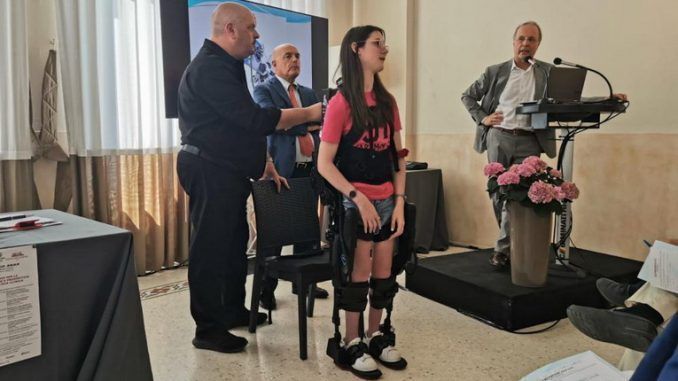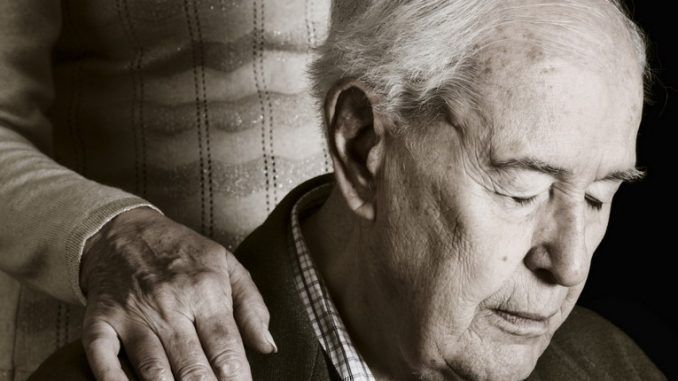
Here are the robots for rehabilitation new opportunities to improve the quality of life for P
Here are the robots for rehabilitation: new opportunities to improve the quality of life for people with disabilities
“Rehabilitation technologies are fundamental in numerous areas and in all ages, not only for elderly people: they can be decisive after road accidents or at work, in the face of neuromotor or cognitive disabling pathologies” underlines Giampietro Salvi, president of the Genesis Foundation
The support of robotics in rehabilitation is about to meet a new era. These tools have been available for about twenty years, but the rapid development of technology now offers new opportunities in the care of patients with neurological trauma. A progress that must be understood, disclosed and implemented through specific policies. The starting point is the “Cicerone” Consensus Conference promoted at the end of 2021 by the Italian Society of Physical and Rehabilitation Medicine – SIMFER and by the Italian Society of Neurological Rehabilitation – SIRN.
This is where the scientific debate destined to revolutionize the impact of robot-assisted rehabilitation starts.
FROM SAN PELLEGRINO TERME A NEW MODEL FOR ROBOTICS
One of the first scientific initiatives that address this new reality is the meeting “Robotics and technologies for neurorehabilitation: challenges and perspectives from research to clinical practice”, organized by the Quarenghi Clinical Institute in collaboration with the Genesis Association, under the patronage of ‘Italian Private Hospital Association – AIOP, which takes place on 9 July in San Pellegrino Terme (Bergamo). Scientific supervisors are Dr. Giampietro Salvi, neurologist at the Quarenghi Clinic and President of the Genesis Foundation, and Prof.
Stefano Mazzoleni, Department of Electrical and Information Engineering, Polytechnic of Bari. The meeting compares the major Italian and international specialists in robot-assisted rehabilitation, involving neurologists, physiatrists, physiotherapists and bioengineers, representing the clinical staff, the rehabilitation part and research, with the support of the Genesis Association, made up of patients and family members who have had severe neurological conditions.
“The use of robots has entered the rehabilitation clinic steadily for 20 years, especially in the neurological one – underlines Salvi – Today there are numerous scientific studies that certify the effectiveness of the use of robotics, still associated with traditional rehabilitation treatment, which remains a firm point that can thus be strengthened. This conference will allow us to take stock of future prospects in the use of robots, in which Italy already represents excellence: we were among the first countries in the world to believe in it and now there are excellent results in research. Rehabilitation technologies are fundamental in many areas and at all ages, not just for the elderly: they can be decisive after road or work accidents, in the face of disabling neuromotor or cognitive pathologies”.
“Right now we are facing a generational change in robotic technology – highlights Prof. Mazzoleni – Innovation resides in many areas: it is of an architectural nature, in materials, in functionality, in robot control and above all in the methods of interaction between robot and patient, which clearly improve. With the most modern robotic systems we can intervene on the rehabilitation of the gait, posture and balance of those who have suffered various types of trauma”.
The “Cicero” consent conference, the starting point of the revolution
The “Cicero” consent conference is the starting point in which the new guidelines for the use of rehabilitation robots have been defined. “The conference concerned the robotic and electromechanical devices for the rehabilitation of people with neurological disabilities – explains Prof. Mazzoleni – It was a unique initiative, promoted by Italy, but of international scope. For the first time, 188 people from different disciplines and professions have worked together, all relating to the scoring rehabilitation: physiotherapists, neurologists, physiatrists, bioengineers, patient associations, companies in the sector, Higher Institute of Health. An exhaustive classification of the devices available for a specific use has been proposed on the basis of the rehabilitation project of each patient with neurological damage. Another chapter concerned rehabilitation training with robotic devices in many paintings of disability of neurological origin.
The fundamental aspect of the final document lies in the priority value of the centrality of the human being: an indiscriminate delegation to technology is not allowed, while using a use aimed at improving the medical-patient relationship “.
The pathologies against which you can intervene
Robotics can constitute a decisive support element against some pathologies. “People with results of stroke and compromise of the path draw greater benefit from treatment with robotic devices the worse the functional deficit is and the results improve with the contemporary use of other technologies, such as virtual reality, transcranial stimulation, electrostimulation Functional – Salvi highlights – albeit with less strength and uniformity of conclusions, the treatment assisted by robots is also a good opportunity in other pathologies, especially in the most serious patients: in Parkinson’s disease, with action on balance, on the path, in the phenomena of freezing; in multiple sclerosis, with an improvement in walking; In people with outcomes of medullary trauma “.
THE NEW PERSPECTIVES
The conclusions of the Conference will have to be continuously updated, also because at the moment standard protocols have not yet been validated, but there are increasingly significant indications for rehabilitation in the neurological field, with some evidence of efficacy already emerging. “The rapidity of progress requires the continuation of a synergy between various players with the involvement also of the institutions so that, on the basis of the new scientific evidence that is emerging, the Essential Levels of Assistance are updated more frequently to allow patients to be able to benefit from these innovations” concludes Prof. Mazzoleni.

